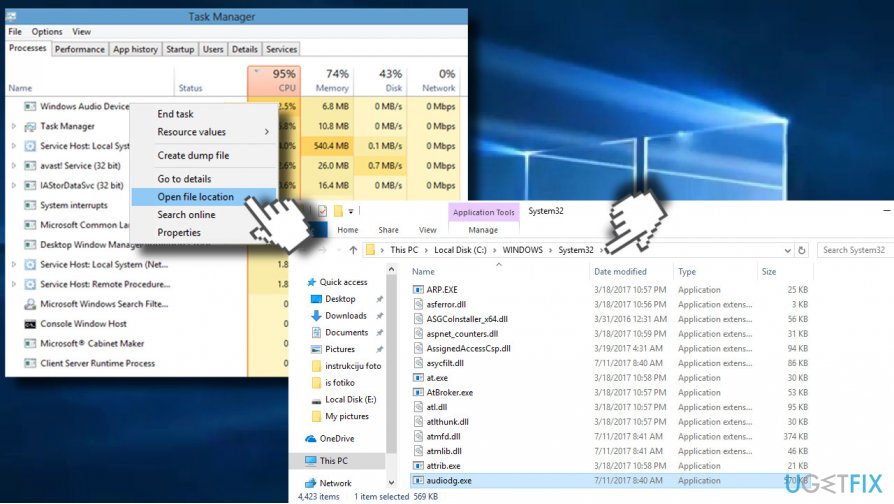

Solution: Go to your laptop (if a laptop) or motherboard (if a PC) manufacturer's website yourself, find the support page for your device model, manually download and install the drivers. When you try to update the driver in Device Manager, you are told that the most suitable driver is already installed because Windows cannot offer you anything better, but this does not mean that the most suitable driver is actually installed.Windows installs a compatible driver from its own repository or update center, but not necessarily the best and most specific one for your hardware.
AUDIODG EXE DRIVERS
And an update attempt in Device Manager usually reports that there is no need to update the driver: "The most suitable drivers for this device are already installed." The important thing is to keep in mind: Normally after install Windows, users don't install sound drivers themselves: Windows does it for them. For example, set the quality to 16-bit 44100 Hz, apply the settings, and then check if this resolved the CPU load issue caused by audiodg.exe. In the “Default format” field, try lowering the bit rate and sample rate. If you have other sound management software installed on your computer - Realtek HD Audio, Nahimic, Maxx Audio or others - disable the effects in them as well.Ĭheck if this solves the problem - it's best to do it after a reboot.Microsoft introduced 'audiodg.exe' in Windows Vista and Server 2008 as a new process, part of new user-mode audio architecture replacing that in XP and Server 2003. In case the default device and default communication device of your computer are different devices, repeat the same steps for the default communication device. What is audiodg.exe The genuine audiodg.exe file is a software component of Microsoft Windows Operating System by Microsoft Corporation.If you have Spatial Sound, Effects or similar tabs (they may or may not be present depending on your sound card), disable the effects on them.The goal is to disable any effects, additional sound processing aids, and apply the settings. Depending on the version of Windows and the specific sound card, this tab may look different. Click on the “Advanced” tab (the tab may be called “Enhancements”).In the Playback tab, select the default device and click the Properties button. The advanced audio settings window opens.Press the keys Win + R (Win is the key with the Windwos emblem) on the keyboard, type mmsys.cpl and press Enter.I recommend that you stop all audio playback on your computer before proceeding as described. The first thing to try is to disable applying effects to audio during playback.


 0 kommentar(er)
0 kommentar(er)
